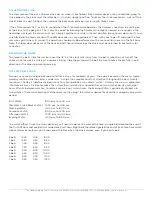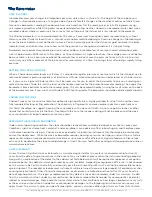
Product Manual
SHIP’S BEll clock and BaroMEtEr
A Chelsea clock is an exquisite time machine. Each is a work of art handcrafted by elite master clockmakers. For more
than a century, Chelsea craftsmen have created instruments whose beauty and workmanship enhance their extraordinary
functionality and durability.
Chelsea clocks sail the seas with the United States military, grace the ocean’s most impressive yachts, and bear witness
to meetings of heads of state, presidents, princes, and kings of rock and roll. Chelsea clocks are treasured by collectors,
cherished from one generation to the next, and given as gifts to some of the luckiest people in the world.
Whether you purchased a handsome Chelsea clock or received one as a gift, you can be sure that Chelsea’s master
clockmakers have taken exceptional care to produce one of the world’s finest instruments.
c o n g ra t u l a t i o n s
t h e S h i p ’s B e l l c l o c k
Two Hundred Eighty Four Everett Avenue, Chelsea, Massachusetts 02150-1515 | Tel 617 884-0250 | chelseaclock.com
SEttInG tHE tIME
Please note that the clock leaves our factory fully wound. To set the time, first remove the black tube from the winding
arbor in the front of the clock (save the tube and replace it when shipping the clock or are away for extended periods).
Next, turn the minute hand clockwise to the correct time, stopping at each hour and half-hour point to allow the bells to
strike their full count.
the hour hand should
never
be moved manually; all adjustments should be made by moving the
minute hand
.
When moving the minute hand, the correct strike count may not sound at the first chime point, but this will self-correct
at the next full-hour point.
Do not force the hands
when setting the time. If they lock at any point, turn the minute hand
backwards through one striking position, then continue as above.
Whether your clock has the Ship's Bell or House Strike* chimes, a “warn” occurs at 20 minutes past and 10 minutes
before the hour. This means that for the 10 minutes prior to each striking point, the gears and levers of the striking mecha-
nism fall into correct position. Thus it is advisable that whenever the striking clock is to be reset, the minute hand only
should be slowly rotated clockwise to the next striking point, and then the clock allowed to strike its full count. Adjust-
ments should never be made during a strike zone, only from 5 to 15 minutes past the hour or 25 to 15 minutes before the
hour.
*A House Strike chime is a traditional chime that usually strikes at the quarter hour.
WIndInG tHE clock
Wind the clock fully weekly at approximately the same time. The left keyhole is for winding the strike mechanism and
the right one is for the clock’s mainspring. Be sure to wind both fully, starting with the left. If the clock has run down, it is
very important to wind it
before
moving the hands. If the minute hand is locked, the mechanism has jammed. To release
it, wind the clock fully on both sides, and then move the minute hand backwards one hour or more. Finally, reset the time
letting the clock strike at the hour and the half-hour points.
rEGulatInG tHE clock
All clocks are finely regulated when they leave our factory. However, environmental conditions, age, and other factors can
minutely affect their rate over time. You can compensate for a minor time gain or loss by adjusting the clocks microm-
eter regulator. A small wheel that appears in a slot in the clock’s face controls the regulator. Turn the wheel toward “F”
(faster) if the clock is losing time, and toward “S” (slower) if it is gaining time. Rotating the wheel one notch will change
the rate approximately four seconds per day. It is generally easier to let the clock run for a full week, then adjust the
regulator as needed.





















